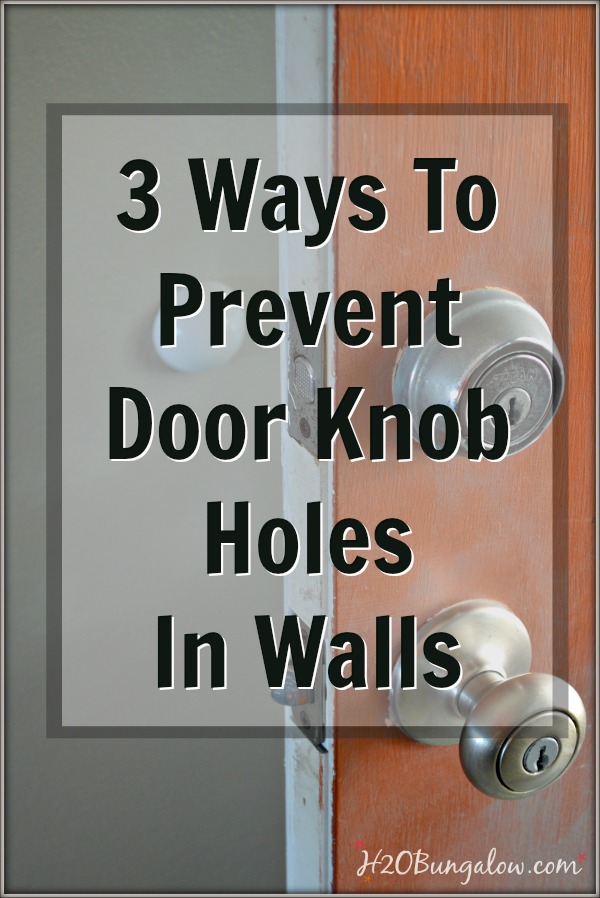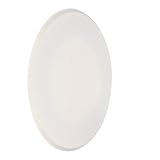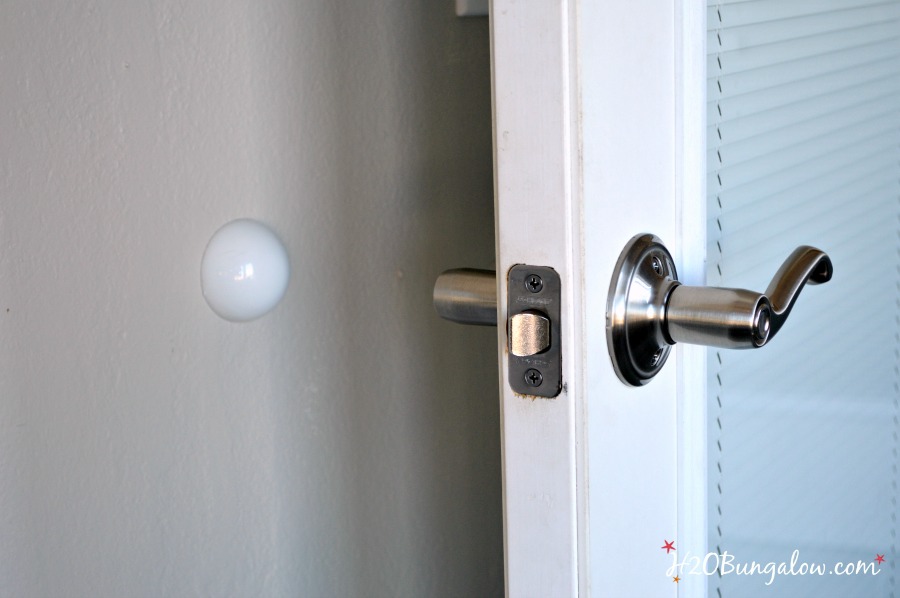I’m sharing the 3 most common ways to stop doors from hitting walls and making big ugly holes in them. I’ve used several products to help stop doorknobs from making holes in the walls when they are opened too hard. A few worked OK, some not so much. Of all the methods to stop a door from hitting the wall I tried, I’ve picked my top three.
I have door bumps also known as door guards behind every door that opens against a wall in my house. They have saved me a lot of time and money in repairs. Today, I want to share with you 3 ways to stop doors from hitting walls and a quick little story.
When my girls were little and we lived in California…
We were renting a house that had enough room for both of my girls to have their own bedrooms. My girls have always been close, close in age and close together when they found themselves in creative hot water. I don’t remember the details of why, but they were sent to their rooms one afternoon for a”go to your room and think about what you did” moment.
A while later I heard giggling.
Then more giggling. I figured I should check out the cause, because being sent to your room isn’t supposed to be fun, right? And I did find the reason for the giggles. One of my girls had a hole in the drywall where the doorknob was repeatedly hitting the wall when the door was opened to hard. Over time the hole got bigger. I probably forget about fixing it or it was “on the list of never ending mommy to dos”.
I don’t know how they figured it out, but they did. One daughter made her hole larger and the other made a new hole in her wall. Yup, they created a little opening so they could see each other and talk back and forth. I smile as I write this now, but, I can assure you I was in no mood to smile when I discovered what they’d done!
You know the old saying, If I’d known then what I know?
I would have repaired the holes myself and would have made my girls do it with me so they’d learn more than one lesson! Closer to the truth is that it probably wouldn’t have happened in the first place had I used one of the three methods to stop doors from hitting walls I’m sharing with you guys.
Three Popular Methods To Stop Doors from Hitting Walls
There are several types but these are the ones most commonly used. I use affiliate links to help you find the supplies I used. You can read my full disclosure policy here.
Stick on wall guard, aka soft door bump – This is my favorite and what we use in my house. They stick on the wall, last forever and work great. I like the soft round half circle ones. Here is another style of door guard that works the same. I don’t like it as much because I think it looks like it belongs in a commercial building.
Soft round door bumper to protect walls from doorknob holes.
Stick on wall guard hard plastic. This is a self stick hard round disc that is larger than the doorknob and prevents the doorknob from denting or breaking through a wall when the door is opened. This one is larger than the soft bump and is great for covering small holes that may be forming.
Hard round disc to protect walls from doorknob holes.
Hinge door stop– I’ve used these before and for the most part they work great. Not as easy to install, but still simple. They are nice for aesthetics because they aren’t mounted on a wall. The down side is that bumper guard can put a hole in a hollow core door if it’s pushed hard enough. Since most interior doors are hollow core that can be an issue.
Door stop to protect wall that mounts on the door hinge.
Spring and bumper- The most common type and in my opinion the least effective. They break and don’t last, especially if the door takes a lot of abuse and banged open often. The best feature about these door wall guards is that they are mounted on the baseboard and not easily visible.
As I mentioned, my favorite of the 3 ways to stop doors from hitting walls is the stick-on bump by far. I’ve placed them behind every door that opens onto a wall in my house.
To me, an ounce of prevention is worth a pound of cure… or in this case a pound of drywall repair mud!
And yes, my front door is copper 🙂 See my tutorial on how I did it Here.






